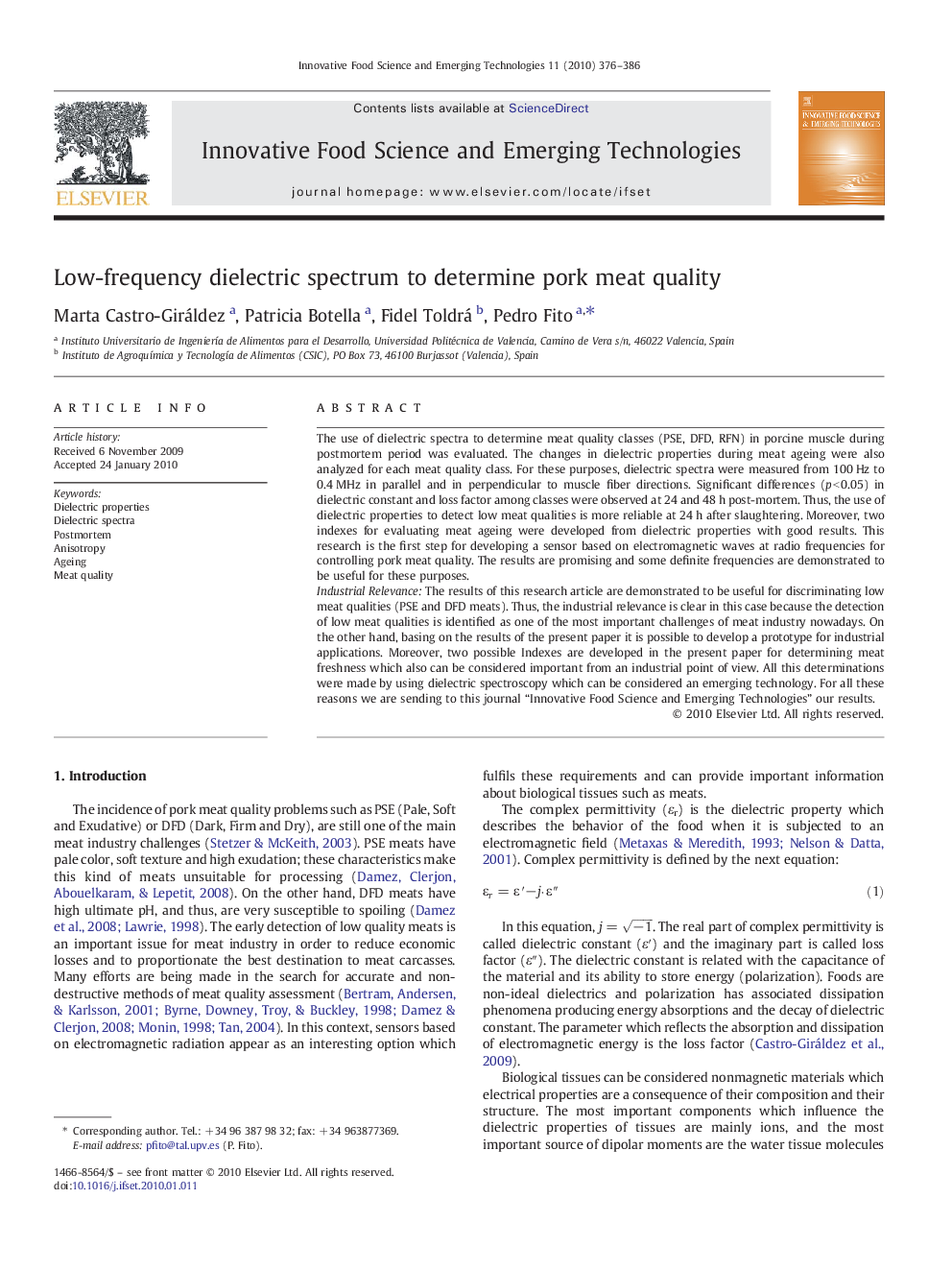| کد مقاله | کد نشریه | سال انتشار | مقاله انگلیسی | نسخه تمام متن |
|---|---|---|---|---|
| 2086946 | 1080623 | 2010 | 11 صفحه PDF | دانلود رایگان |

The use of dielectric spectra to determine meat quality classes (PSE, DFD, RFN) in porcine muscle during postmortem period was evaluated. The changes in dielectric properties during meat ageing were also analyzed for each meat quality class. For these purposes, dielectric spectra were measured from 100 Hz to 0.4 MHz in parallel and in perpendicular to muscle fiber directions. Significant differences (p < 0.05) in dielectric constant and loss factor among classes were observed at 24 and 48 h post-mortem. Thus, the use of dielectric properties to detect low meat qualities is more reliable at 24 h after slaughtering. Moreover, two indexes for evaluating meat ageing were developed from dielectric properties with good results. This research is the first step for developing a sensor based on electromagnetic waves at radio frequencies for controlling pork meat quality. The results are promising and some definite frequencies are demonstrated to be useful for these purposes.Industrial RelevanceThe results of this research article are demonstrated to be useful for discriminating low meat qualities (PSE and DFD meats). Thus, the industrial relevance is clear in this case because the detection of low meat qualities is identified as one of the most important challenges of meat industry nowadays. On the other hand, basing on the results of the present paper it is possible to develop a prototype for industrial applications. Moreover, two possible Indexes are developed in the present paper for determining meat freshness which also can be considered important from an industrial point of view. All this determinations were made by using dielectric spectroscopy which can be considered an emerging technology. For all these reasons we are sending to this journal “Innovative Food Science and Emerging Technologies” our results.
Journal: Innovative Food Science & Emerging Technologies - Volume 11, Issue 2, April 2010, Pages 376–386